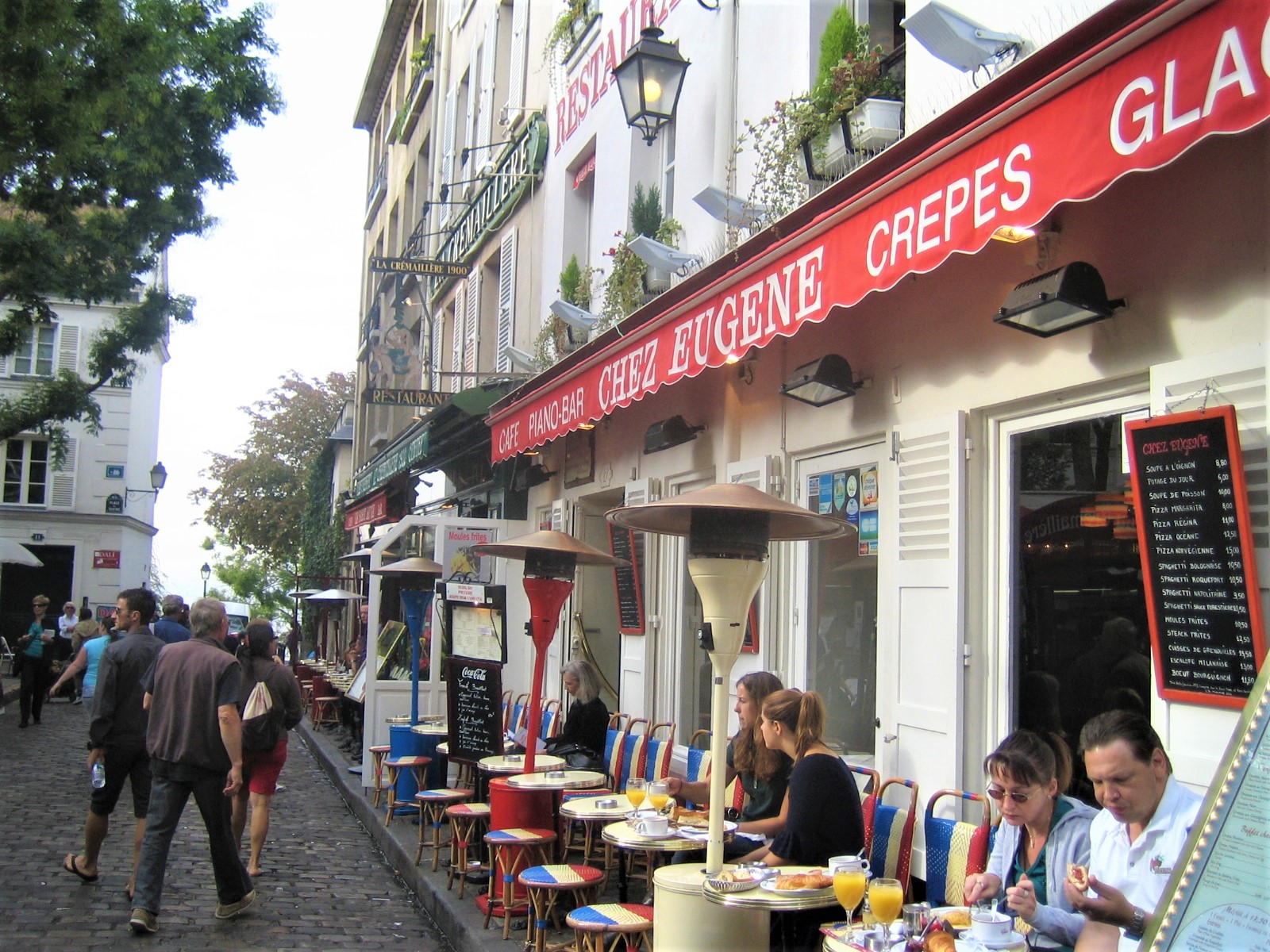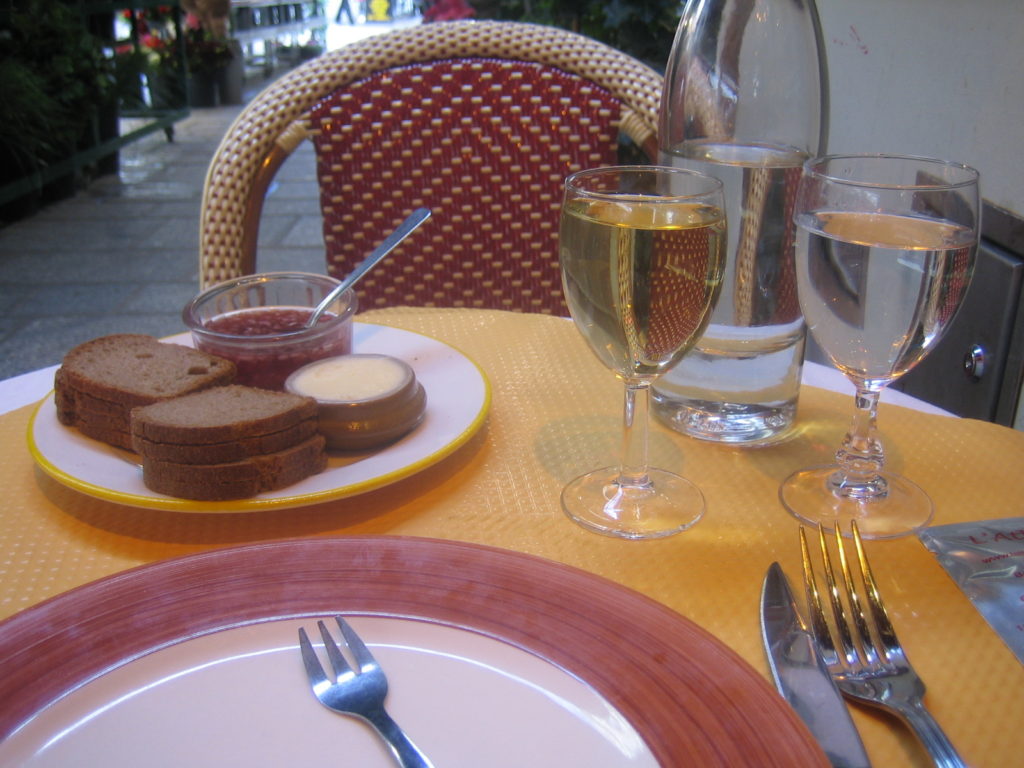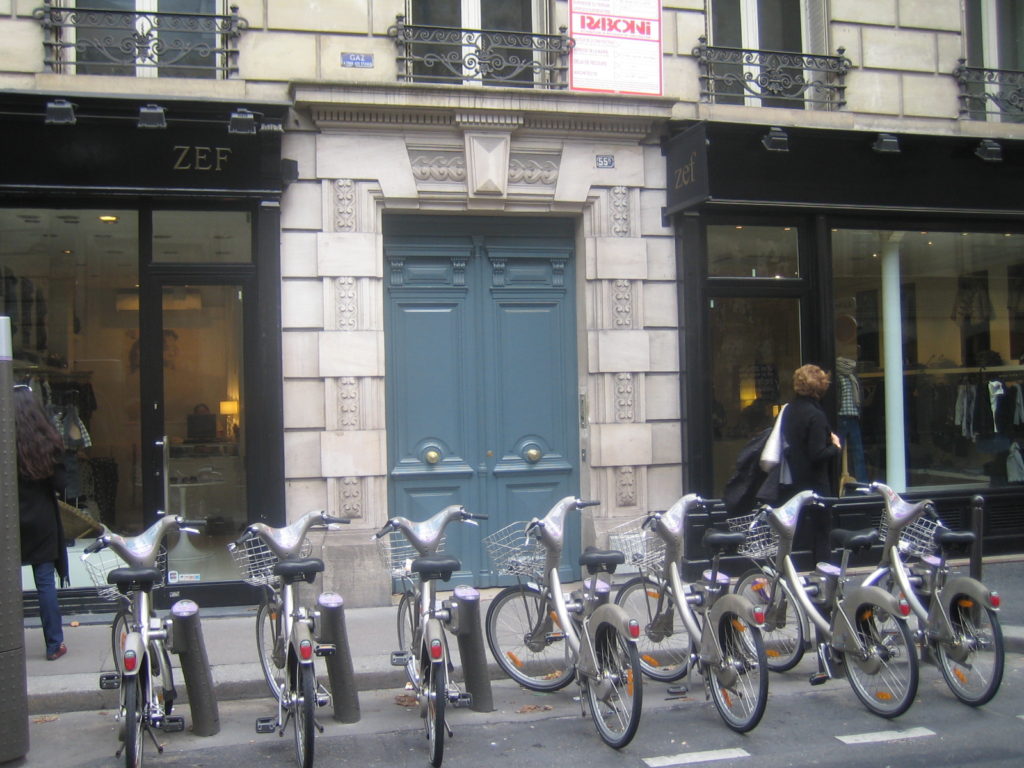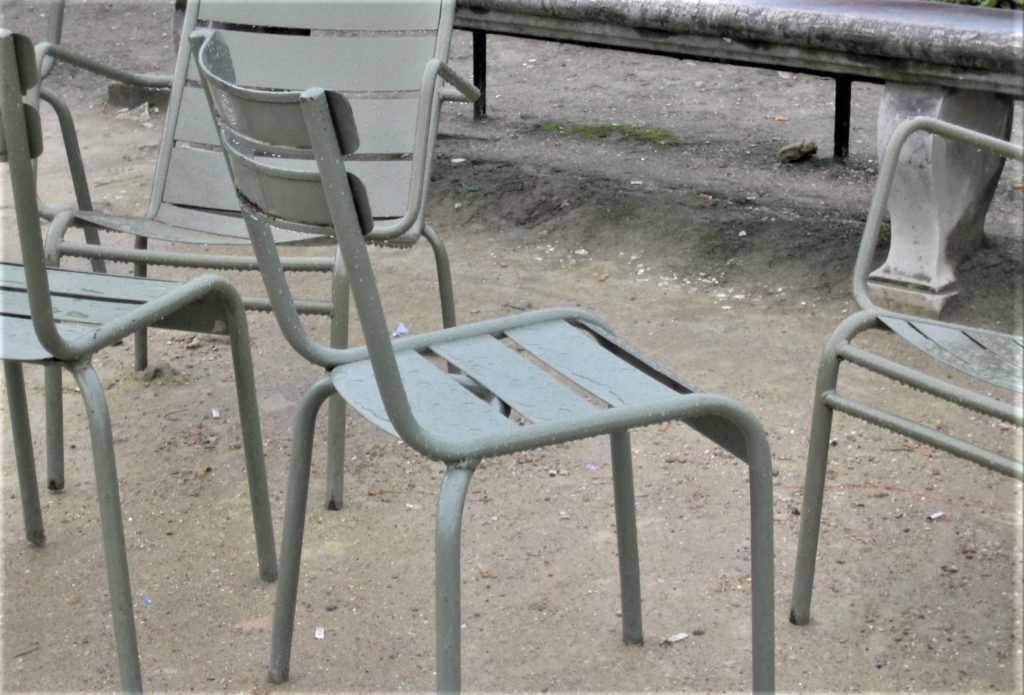Paris is a magical history tour. Armed with any number of Paris guidebooks and specialized tours, you can experience your choice of centuries in a full or half day by strolling through the districts (or Arrondissements) of the central core of the city, which evolved from particular eras into a collective whole. One reason my favorite area of Paris is the Left Bank (Rive Gauche) and its core areas of the Latin Quarter and St-Germain-des-Près is the geographical compactness of history dating from the Roman era to the 21st century.
In a city known for creating trends — and rejecting them just as easily — the 6th Arrondissement (which centers in St-Germain-des-Près and includes some of the Latin Quarter and Montparnasse) has been a vital center of fashion as well as intellectual and religious life for centuries. As I live in a city where history is measured in decades, the experience of moving through centuries in a half or whole day is breathtaking.
The student area of the Latin Quarter (centered in the 5th) has gotten pretty tourist ticky-tacky, particularly closer to the Seine River along Boulevards St-Germain and St-Michel, but it’s certainly not to be dismissed, and especially as the quarter moves into the St-Germain-des-Près district next door. In fact, the 5th Arrondissement is rich in history — from the Romans to medieval times (the Cluny Museum), to the événements of mai 1968, when the Paris student revolt erupted along with the student protests in the US and around the world. Like other communities surrounding universities, say Georgetown or Berkeley, the 5th has a mixture of student life and intellectual, political or artistic gentry. That phenomenon has earned the latter the term of “Bo-Bo” to my French friends — “bohemian bourgeoise.”
The 6th, however, is a step up in the snob category as the continuing center of much cultural fashion. It was here that the French “cafe” originated in the late 17th century by Francois Procope, that the Institut of France and its famous academies (such as the Académie des Beaux Arts) are located, where American writers and ex-pats of the early to mid 20th century (including Gertrude Stein, Ernest Hemingway, and Henry Miller) lived, and in cafes where French intellectuals such as Jean-Paul Sartre and Simone de Beauvoir did their writing and by doing so created cafe societies of distinction (Café Flore, 172 Blvd. St-Germain, Les Deux Magots, 6 Place-St-Germain-des-Près, and Brasserie Lipp, 151 Blvd. St-Germain, for example). Paris’ artists, theaters and jazz clubs have always been feverish here, and haute couture brought new luxury in the 1960s with Yves Saint-Laurent and subsequently a host of French and other international designers.
Trolling along Rue Jacob, Rue Bonaparte and Rue l’Université in one area of the quarter brings high end upholstery and home furnishing shops, art galleries, specialty bookstores, seamstresses for expensive children’s clothing and, in one dazzling window, a shop of perfume bottles in modern designs of pyramids and cones of ruby and white. At the prominent intersection of Blvd. St-Germain and Rue Rennes, what used to be the renowed cafe Royal St-Germain across from Les Deux Magots in early 20th century was replaced by the funky Drugstore Publicis in the 1960s and is now the dramatic Emporio Armani (149 Blvd. St-Germain), a series of transformations that in one building capture the changing fashions of the quarter.
As you walk through the 6th, you can peer into hidden courtyards and wind through narrow cobblestone streets, then suddenly discover a blur of high fashion storefronts (pink, tangerine, teal and mauve appear to be once again the hot pastels of the spring — along with ruffles, asymmetrical and bias-cut anything). The original Poilane’s, the famous bread shipped daily around the world, is practically hidden at 8 Rue du Cherche Midi, while the massive 17th century church of St-Sulpice, made recently more famous in The Da Vinci Code, has a copper band in the floor originally built to capture the spring equinox (and at the time, the exact date of Easter) and magnificent Delacroix murals.
The area has been replete with American ex-pat writers, such as Edith Wharton (1908) at 53 Rue de Varenne, Gertrude Stein (1903-1937) at 27 Rue de Fleurus, and Janet Flanner (1925-World War II) at the Hotel St. Germain des Près, 36 Rue de Bonaparte, where I in 1977, as an aspiring writer on my first trip to Paris, wrote in my journal the dreamy line from chanteuse Edith Piaf, “Ça me fait voir la vie en rose,” thus beginning my own love affair with Paris.




